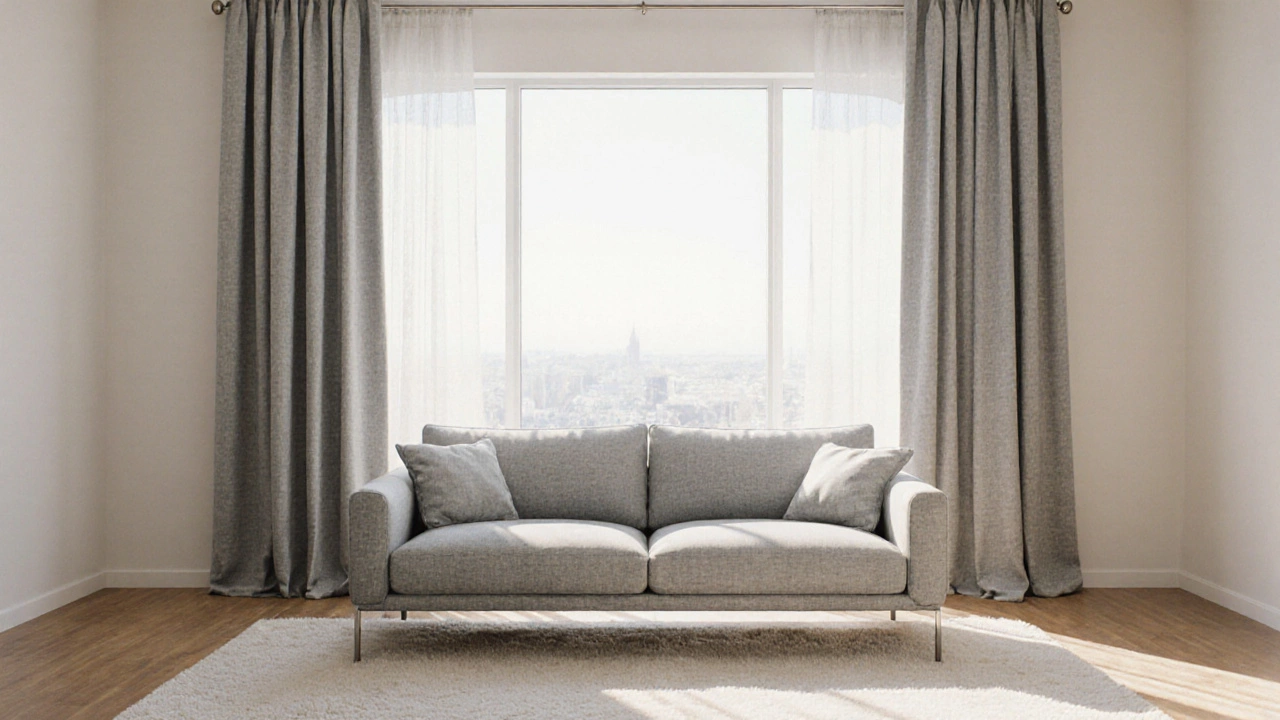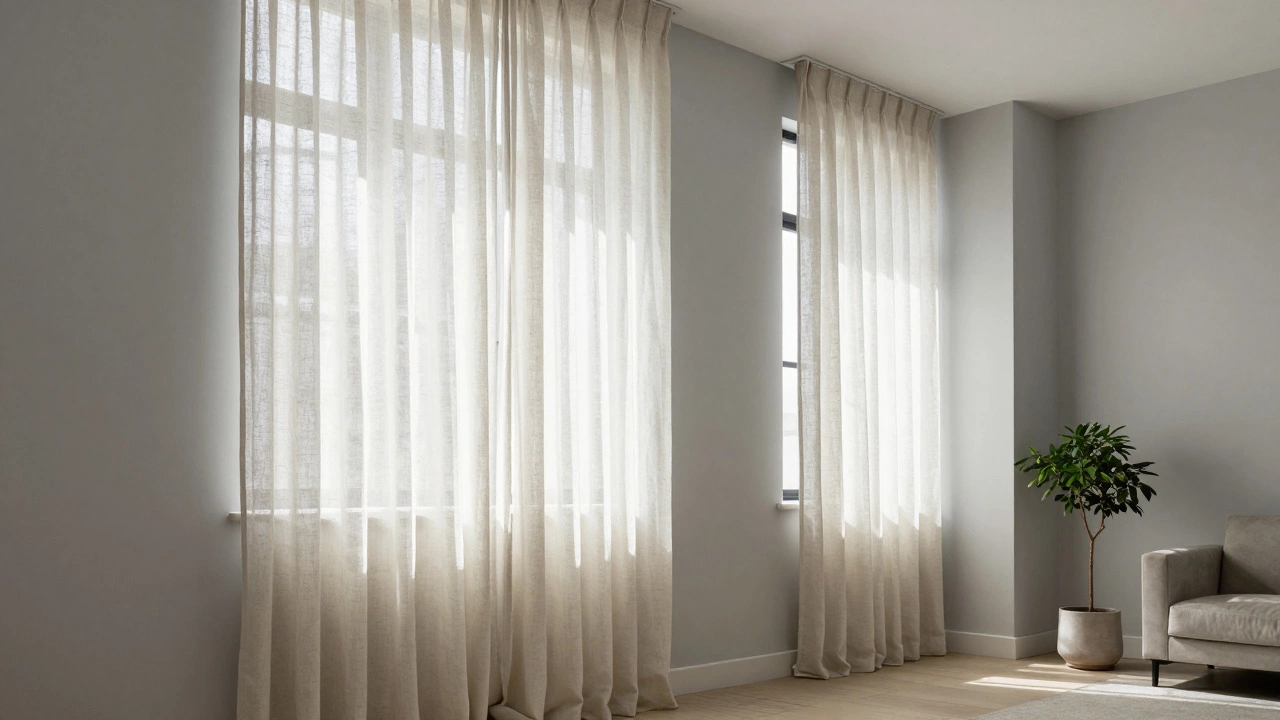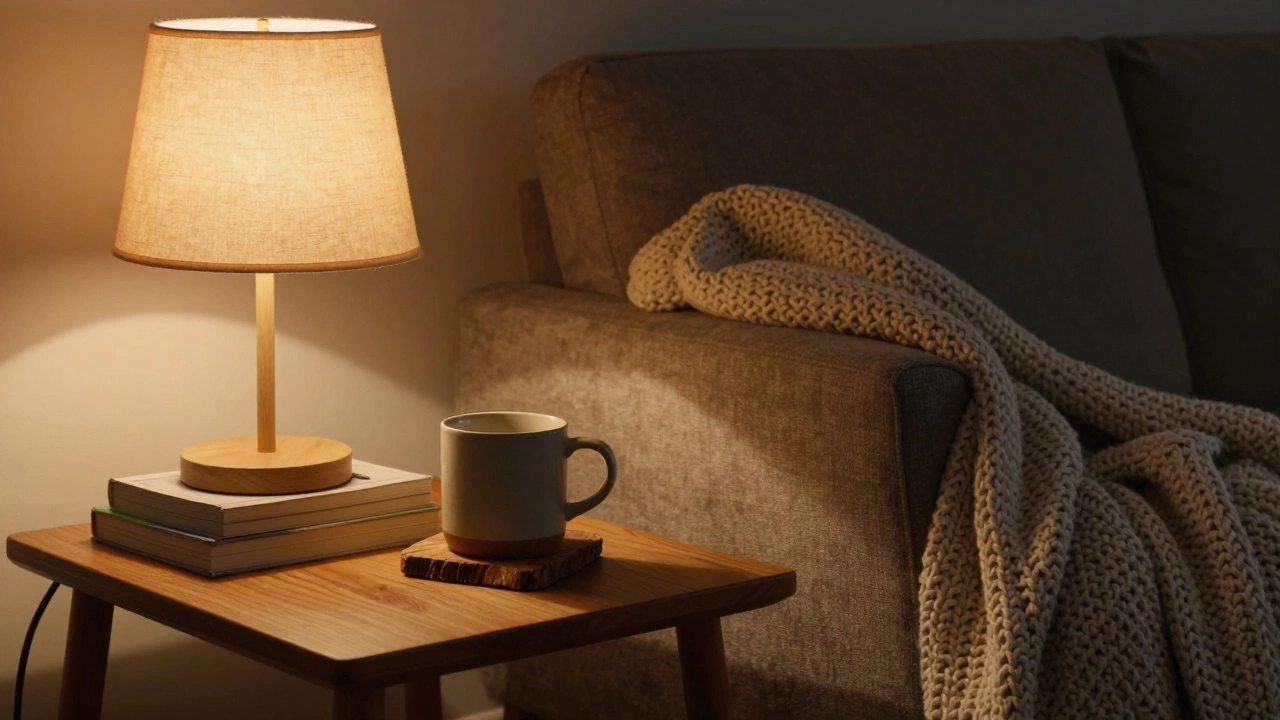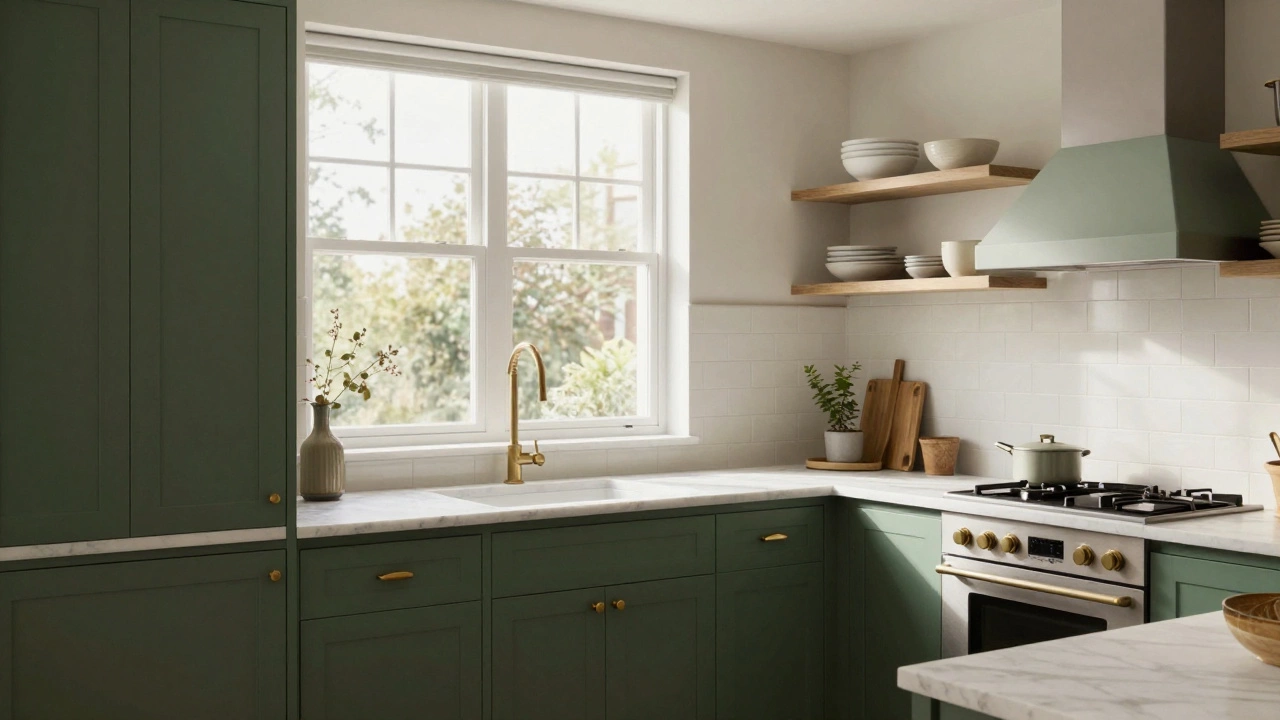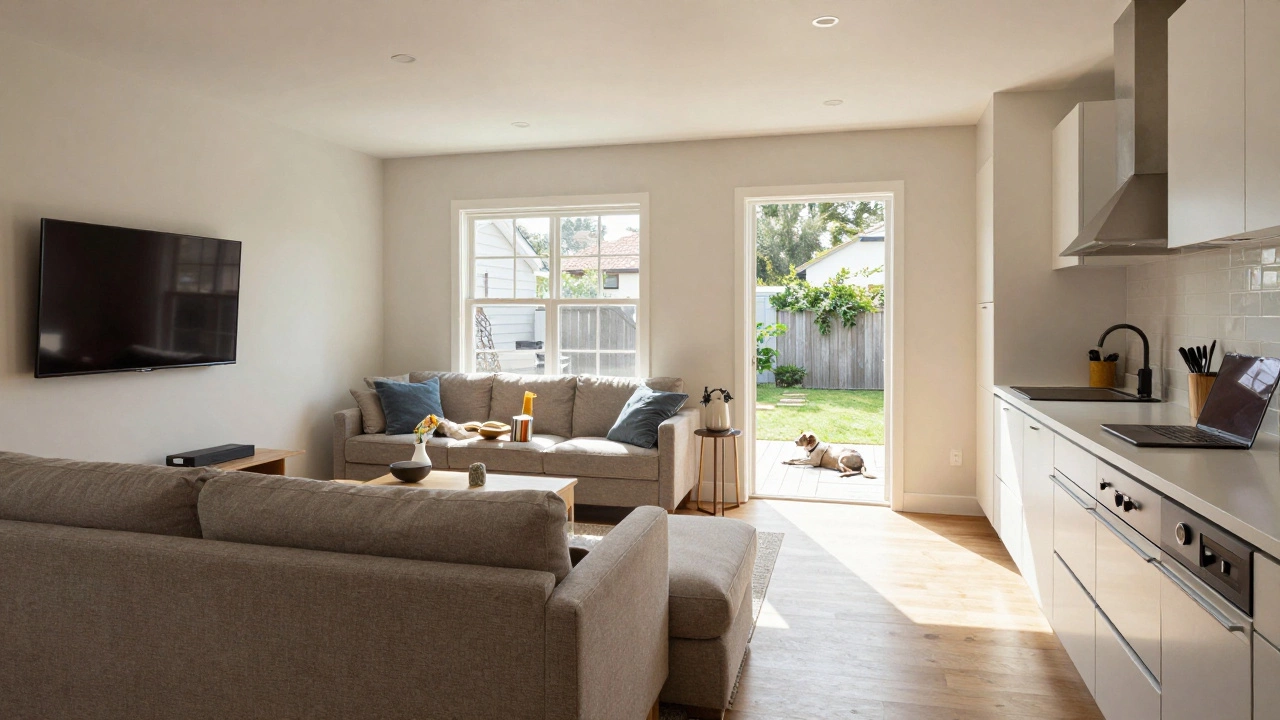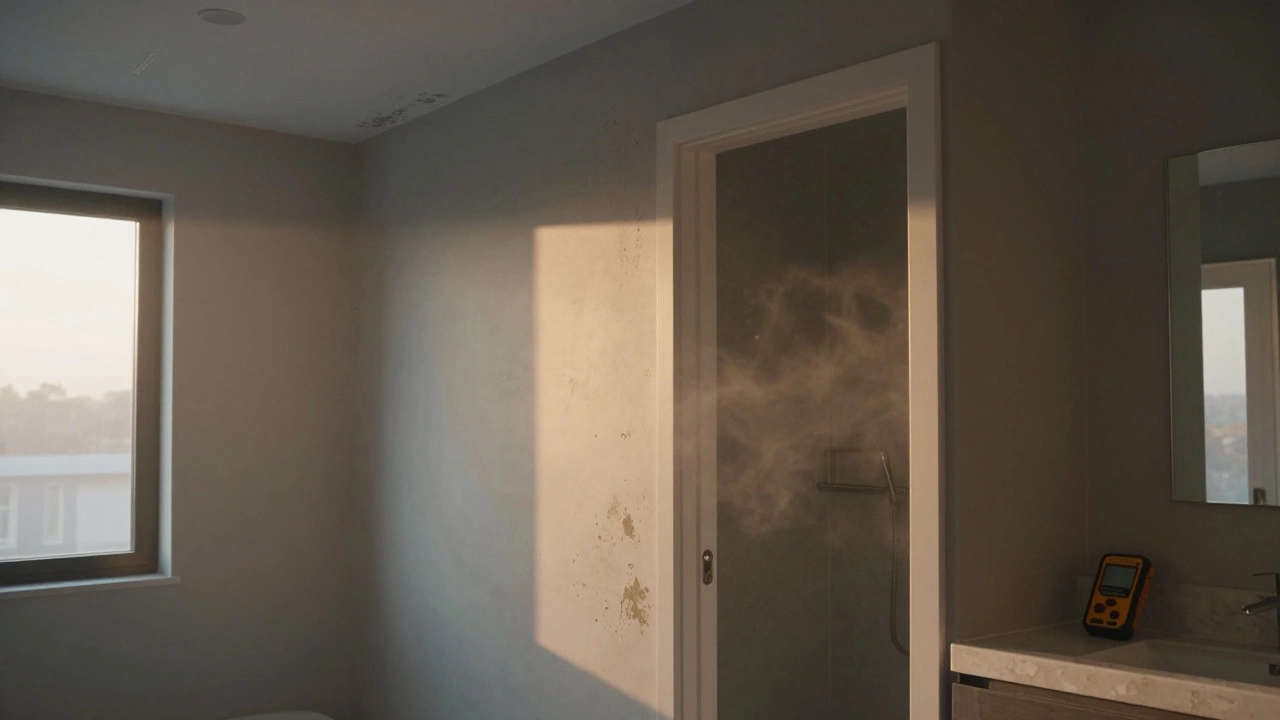Curtain & Sofa Color Match Calculator
How to Use
Enter your sofa and curtain colors to see if they work together. Follow the analysis and recommended actions based on the article's guidelines.
Color Analysis
Compatibility Result
Recommended Action
Key Takeaways
- Matching curtains to a sofa works best when the room’s overall palette is simple.
- Contrasting curtains add drama, but they must share a common undertone.
- Use texture, pattern, and lighting as secondary tools to tie the two pieces together.
- Start with a color palette, then decide on match or contrast based on the room’s style.
- Test swatches in natural light before committing.
When styling a living room, Curtains are fabric panels that hang from a rod to control light, privacy, and visual interest often get paired with a Sofa the main seating piece that anchors the room’s color and texture. The question that pops up in most design chats is whether those two should be color‑matched or can they coexist with contrast. Below we break down the decision‑making process, give you a toolbox of tips, and share real‑world examples so you can decide if curtains match a sofa for your space.
Why Color Coordination Matters
Color is the fastest way to create harmony or tension. In a Living room the central gathering area of a home, the sofa usually serves as the visual anchor. If the curtains clash harshly, the eye jumps around and the room feels unsettled. Conversely, a balanced palette makes the space feel larger, more cohesive, and inviting.
Match or Contrast? Knowing When to Sync
There’s no one‑size‑fit rule, but a few guidelines help you decide:
- Match when: The room uses a limited color scheme (e.g., neutrals with a single accent). Matching reinforces calm and makes the space feel curated.
- Contrast when: You have a bold accent sofa or want to highlight architectural features like large windows. Contrast adds visual interest without overwhelming.
Both approaches hinge on a shared Color palette a set of hues that work together in a design. Think of it as a musical key: whether you play a melody in the same key or a harmonious counter‑melody, the notes must fit together.
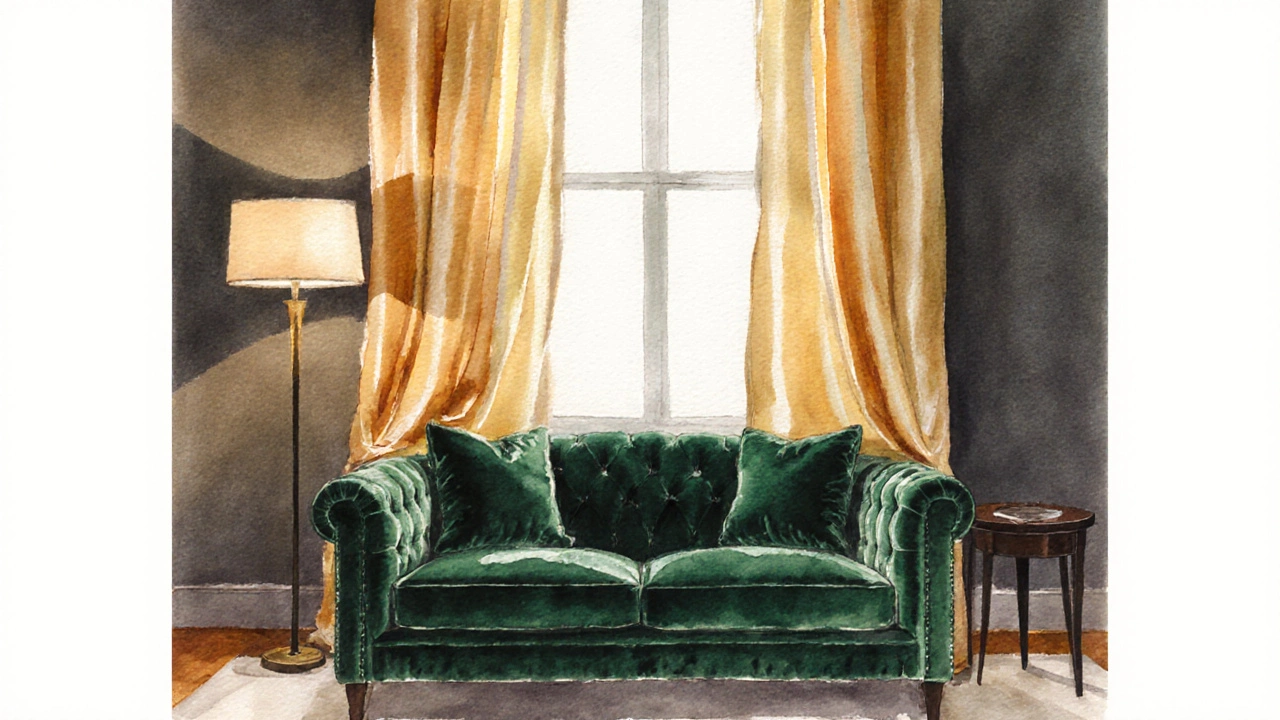
Step‑by‑Step Guide to Make Curtains Work with Your Sofa
- Identify the sofa’s dominant hue. Is it a deep navy, soft ivory, or a patterned blend? Write down the exact shade if possible (e.g., Pantone 19‑4052).
- Map out the room’s secondary colors. Look at the rug, artwork, and wall paint. Pull a color wheel and note complementary or analogous tones.
- Choose a curtain strategy.
- Exact match: Pick fabric that mirrors the sofa’s main color. This works well with neutral sofas and light‑colored walls.
- Tone‑on‑tone: Use a shade lighter or darker than the sofa. It creates depth without the starkness of a perfect match.
- Contrast with a common undertone: Select a color opposite on the wheel but share a small undertone (e.g., warm beige undertone in both gray sofa and rust curtains).
- Factor in Fabric the material composition of curtains, such as cotton, linen, or velvet and Texture the tactile quality that influences visual weight. A plush velvet curtain pairs nicely with a sleek leather sofa; a crisp linen suits a casual linen‑blend sofa.
- Test with swatches. Hang a 12‑inch strip of curtain fabric next to the sofa for a day. Observe how natural and artificial light change the perception.
- Adjust with accessories. Throw pillows, a rug, or a coffee table runner can bridge any gap between the two pieces.
Comparison Table: Matching vs. Contrasting Curtains
| Aspect | Match Sofa | Contrast Sofa |
|---|---|---|
| Visual Cohesion | High - creates a seamless look | Medium - relies on shared undertones |
| Design Flexibility | Low - limits color experimentation | High - allows bold statements |
| Room Size Perception | Can make space feel larger when colors are light | Dark contrasts can shrink a room if not balanced |
| Maintenance | Easier - similar fabrics often share cleaning needs | Varies - may need different care for distinct materials |
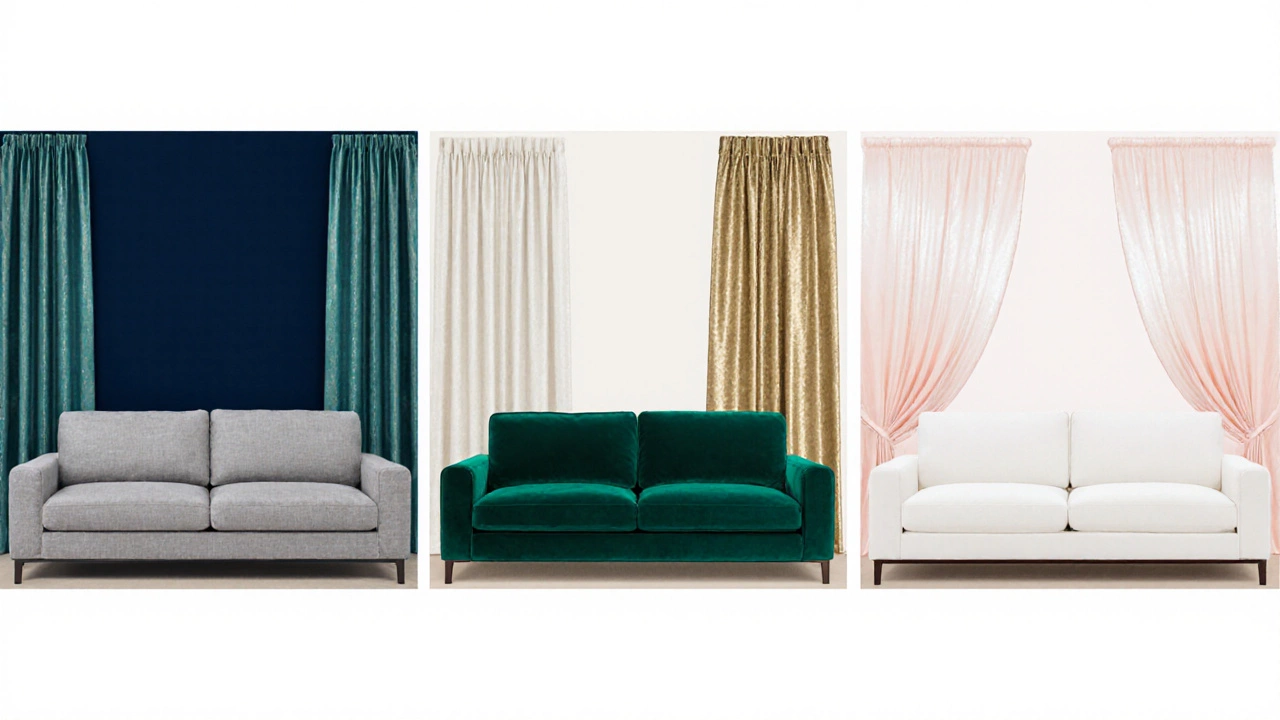
Common Pitfalls and How to Dodge Them
- Over‑matching. Using the exact same shade on both sofa and curtains can make the room feel flat. Introduce a subtle variation in tone or texture.
- Ignoring lighting. Curtains that look perfect under showroom light may look dull in your north‑facing window. Always view swatches at different times of day.
- Neglecting pattern scale. A tiny floral pattern on curtains can get lost beside a large‑scale sofa graphic. Match scale for harmony.
- Forgetting accessories. A single throw pillow that mirrors the curtain color can pull the look together, preventing a disjointed feel.
Real‑World Styling Scenarios
Scenario 1 - Neutral Sofa, Bold Accent Wall. A light gray linen sofa sits against a navy accent wall. Choose curtains in a muted teal (analogous to navy) with a linen‑blend texture. The teal adds a pop while still echoing the wall’s cool tone.
Scenario 2 - Velvet Sofa in Deep Emerald. For a luxurious emerald velvet sofa, opt for curtains in a soft gold silk. The gold contrasts dramatically, yet both fabrics share a rich sheen, linking them through texture.
Scenario 3 - Minimalist White Sectional. With a crisp white sectional, you have freedom. Go for sheer ivory curtains for a light, airy feel, or add a splash of pastel pink to introduce subtle warmth.
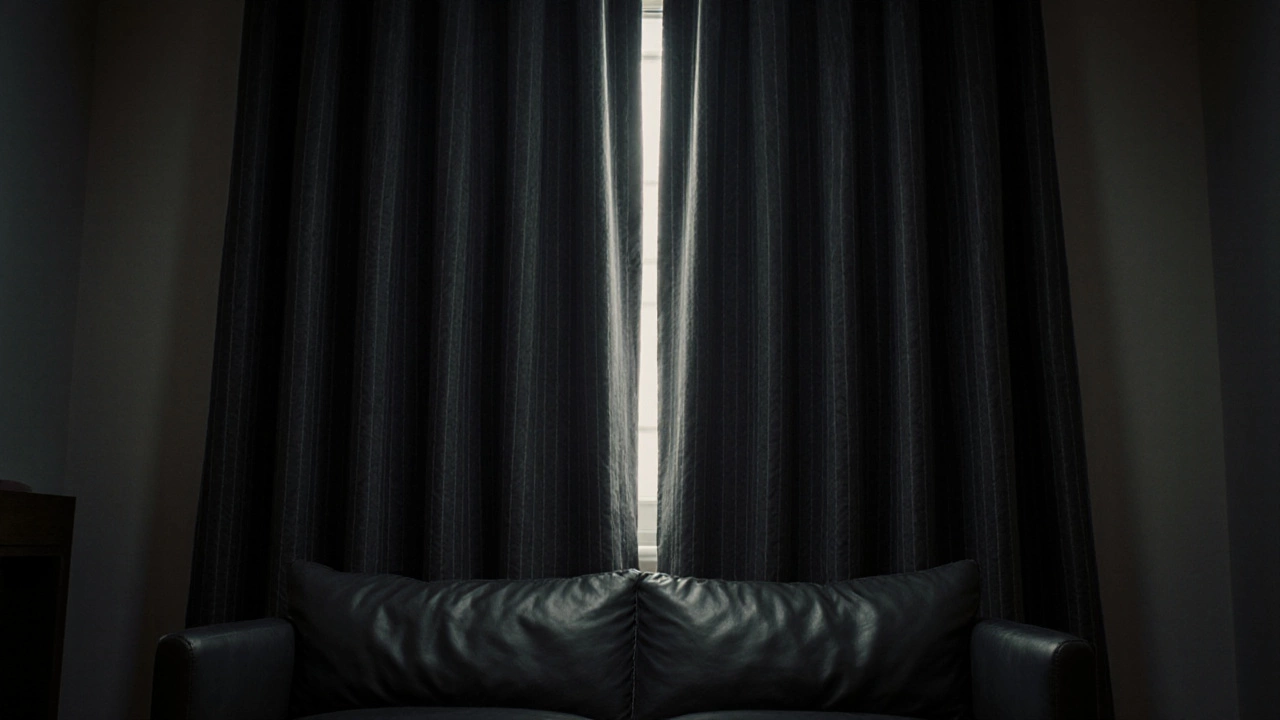
Next Steps & Troubleshooting
If you’ve tried a color combo and it feels off, ask yourself these questions:
- Do the curtains share any undertone with the sofa?
- Is the fabric weight proportionate to the sofa’s material?
- Have you tested the look at both sunrise and sunset?
Answering ‘yes’ to most points usually means you’re on the right track. If not, experiment with a small accessory (pillows, a v‑neck throw) that borrows the curtain hue, then revisit the overall balance.
Frequently Asked Questions
Can I use patterned curtains with a solid‑color sofa?
Yes. Pick a pattern that includes a shade from the sofa. For example, a grey sofa works well with a charcoal‑on‑cream stripe that features grey as a secondary color. This ties the two together without overwhelming.
Should I consider the window size when deciding on a matching strategy?
Absolutely. Large windows benefit from curtains that echo the sofa to create a unified backdrop, while smaller windows can handle bold contrast because the visual impact is limited.
Is it okay to have the curtain rod color clash with the sofa?
Rod color is a subtle detail, but it can act as a bridge. A brushed nickel rod works with both cool and warm sofas, while a wooden rod should match the sofa’s wood tone or the room’s flooring.
How do I keep the look cohesive if my sofa has multiple colors?
Identify the dominant or most frequent color in the sofa’s upholstery and build your curtain palette around that. You can also pull a secondary hue from the sofa for accent curtains.
Do heavy drapes ever look good with a lightweight sofa?
Yes, if you balance the visual weight with a sturdy coffee table or a solid wood floor. The drapes add drama, while the light sofa keeps the space from feeling oppressive.

